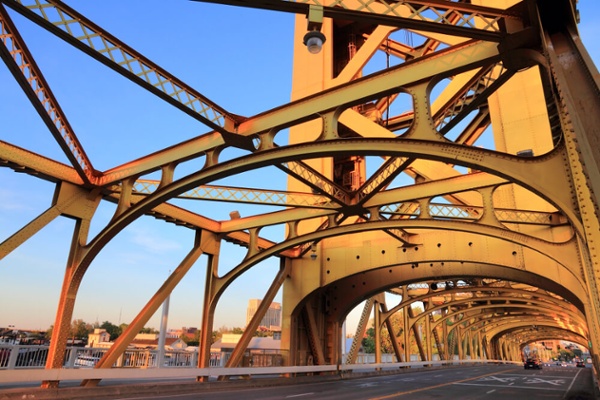
Fiber-reinforced polymer, or FRP, is an engineered material used in many different types of infrastructure projects. Its uses range from bridge decking and utility poles to handrails and ladders, with plenty of room and design flexibility for custom OEM projects.
Compared to steel or concrete structures, FRP composites are a relatively new structural material, but one that’s making a fast and considerably large impact in the infrastructure industry. Not only has it become a worthwhile investment for many government and military projects, installations are also becoming more frequent in many industrial companies and in your cities and local amenities.
The benefits of this material are undeniable. Like all materials, FRP isn’t completely maintenance-free itself, but it has a considerably longer life span due to high durability and corrosion resistance.
We’ve compiled some of our most informative blogs below to highlight the value of FRP composites as well as provide some insights you’ll need to know if you’re considering it for an upcoming or future project. Enjoy!
4 Reasons to use Fiber-Reinforced Polymer (FRP) Materials
FRP offers a wide range of unique benefits — short production and installation time, light weight, long-term cost savings, corrosion resistance, and superior longevity. An ideal material for use in almost any infrastructure project, it is very dynamic, making it the perfect choice for many types of infrastructure from waterfront fender systems to bridge decks, waterway culverts and much more. Creative Composites Group has extensive expertise in both FRP manufacturing, installation, and field service. Read about the key factors that differentiate FRP from traditional materials.
Fiber-Reinforced Polymer Composites and Its Uses in Engineering Projects
FRP composites are strong, flexible, durable, and last longer than many other construction materials. They save money up front and over time, as this material is very easy to work with and resists damage from operations and the environment and incurs very little maintenance cost over time. Learn more about the benefits of FRP for civil engineering projects and how it's used as a long-term solution.
From Installation to Repair, The Value of Field Service is Clear
An FRP fabricator’s ability to repair and install structures under a range of circumstances is critical to extending the useful life of the equipment and getting the most value for your investment. Learn more about some of the different and challenging environments our field service technicians can work in.
Maintaining & Repairing FRP Tanks and Pipes
To get the longest life possible from tanks and pipes that are used for chemical applications, you need to have a good preventive maintenance and inspection program as your first line of defense and be aware of your options for repair and field service. Having a plan in place, even just in case, means you’ll avoid unscheduled downtime, damage, and even environmental incidents or worker injuries. Here's what you need to know if you're considering FRP for long-term storage of chemicals.
FRP Repair Checklist
The reality is if you use FRP structures to store corrosive substances, at some point they will need maintenance and repair work. Knowing what to look for and keeping an eye on potential problems (e.g. cracks that grow or change) means you can react quickly and call an experienced contractor to fix them as soon as possible. Few things are more helpful to a successful FRP repair than an informed and prepared customer. Learn more about the FRP repair process and what you need to know to keep it going smoothly.
Creative Composites Group would love the opportunity to discuss the benefits of FRP for your next project. We also have the field service expertise to work with existing structures and to stand behind new ones. Want to learn more? Contact us today!
